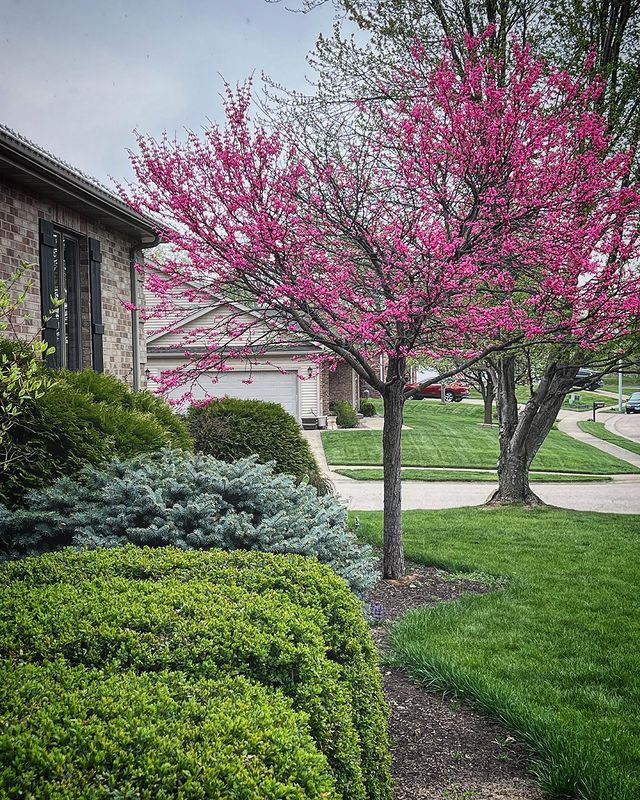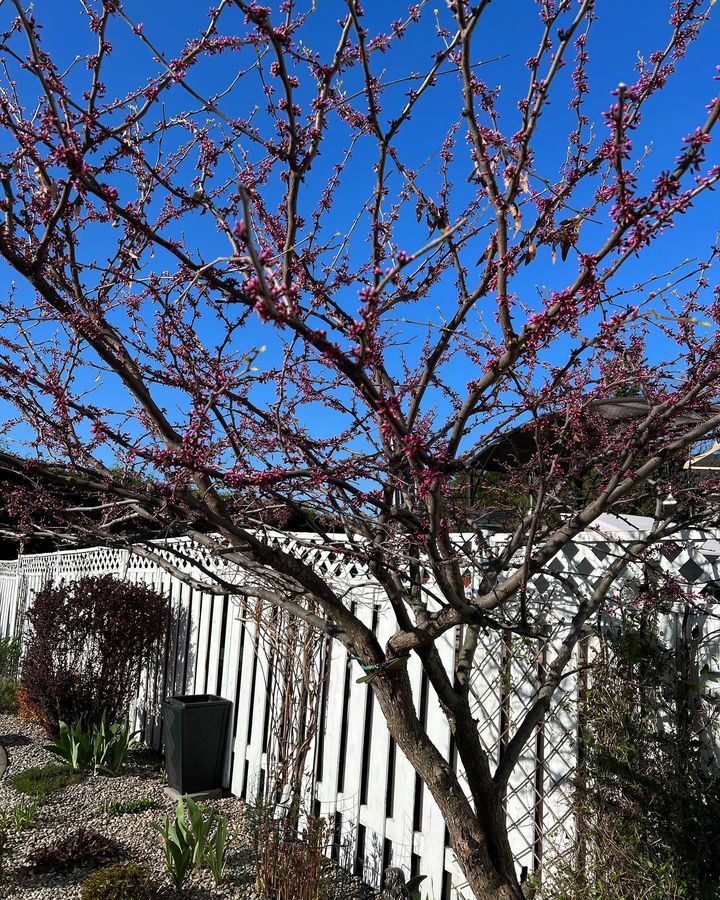The pea-like flower adds to the pros of the Eastern Redbud tree, but understanding the cons is equally crucial before you bring the tree home.
You can keep the plants healthy with proper early-stage care, so follow along to learn tips and tricks to balance the western Redbud tree pros and cons.
Table of Contents Show
What are Eastern Redbud Tree?
The Eastern Redbud tree, botanically known as Ceris canadensis, is a deciduous tree priced for its dense display of pink or purple blooms.
These trees are native to the eastern region of North America, so named the Eastern Redbud tree. However, you will find the tree in most parts of the U.S. and Canada.

Further, the Redbug tree is a member of the legume family Fabaceae, a distant cousin of Mimosa and Formosa.
That said, they are nowhere near the growing condition of Peanuts, which also belongs to the same family.
Pros Of Eastern Redbud Trees
Eastern Redbud trees are planted as ornamental because of their vibrant flower.
However, Redbuds are more than just flowers. These trees are highly adaptive and drought-tolerant.
Let’s look at the pros of eastern Redbu trees, enough to subside its few cons.
1. Redbud Trees are Heat Resistant
The hardy redbud tree has a moderate temperature requirement and can tolerate cold and warm summers.
Also, the Redbud can long time without water, meaning they are drought-resistant.
Weekly watering during the summer will do the job. However, adjust the watering according to the season.
2. Redbud Trees Have High Adaptability
One of the other pros adding to the popularity of the Eastern Redbud Tree over the cons is the suitability of plants in a wide range of soil and environmental condition.
Redbud normally prefers slightly acidic to neutral soil of pH 5.5 to 7. But you’ll not have a problem growing them in clay, loam, or sandy soil.
While they perform best in full sun, they can still thrive in areas with some shade.
3. Use in Landscape Design
Redbud trees could be an excellent addition to your plain backyard and lawn.

Also, they are among the early-blooming plants, so you will have spring before other plants start flowering.
Not to forget the tree’s small manageable size, making it more likable.
4. Redbud Trees Attract Pollinators
As much as the subtle shade of the Redbud blooms entices us, Redbud equally attracts pollinators.
Most of it has to do with the bright and vibrant color of the plant. Besides, these early flowers are a valuable nectar source for pollinating insects like bees and butterflies.
Importantly, the pollinators also help pollinate the surrounding plants, adding to the plant’s value.
Cons of Eastern Redbud Tree
Despite all the pros of the Eastern Redbud tree, you must know some cons before you fix on getting one.
So let’s look at the cons of the Eastern Redbud tree.
1. Redbud Trees are Toxic
While many believe the visually appealing Redbud has medicinal benefits, no proper scientific proof exists.
However, parts of Redbud trees, like leaves, bark, and seeds, contain a low amount of saponin, which is a toxic compound.
So the leaves and blooms the plant sheds every spring are not safe for your pets.
Further, due to the toxic nature of the plant parts, it is necessary to clean the dropping foliage regularly.
2. Susceptible to Pest Infestation
Pest and disease infestation is one of the major problems that come along the Redbud tree.
Similarly, canker or dieback diseases cause the yellowing of leaves, followed by wilted droopy trees in later stages.
Use neem oil or pesticides to prevent the spread of pest and disease infestation from taking over the entire plant.
3. Extensive Initial Care
A mature Redbud tree will not bother you, given its easy-to-care nature.
But you have to provide extensive care to its young ones to increase their chance of survival for the following years.
You also need to plastic mulch around the tree’s base to help retain soil moisture, regulate temperature, and prevent weed growth.
Moreover, monitoring the plant constantly is a tough task.
4. Relatively Short Lifespan
The average lifespan of Redbud trees is 20 to 30 years, which is relatively short compared to other trees like the Eucalyptus.
Although that may seem a lot, most other ornamental trees make it over 50 years.

Therefore, the short lifespan can be a setback for gardeners growing them believing that it can make it to several generations.
5. Prone To Wind Damage
Continuing the list of cons that overshadow the pros of the Eastern Redbud tree is the shallow roots of the tree.
While shallow roots are an assurance of the non-invasive nature of the tree, the tree has a light grip on the soil.
In that case, the surrounding plant is also at high risk of damage.
From Editorial Team
Frequent Pruning Is Not Mandatory!
Redbud Trees are not giant growing trees, so you do not need to prune them frequently.
In the early growth stage, prune the young plant to remove competing or crossing branches. This promotes a strong and healthy framework.
But, avoid removing large portions of the canopy in mature trees as it may reduce the ability to produce flowers.
All The Best!


